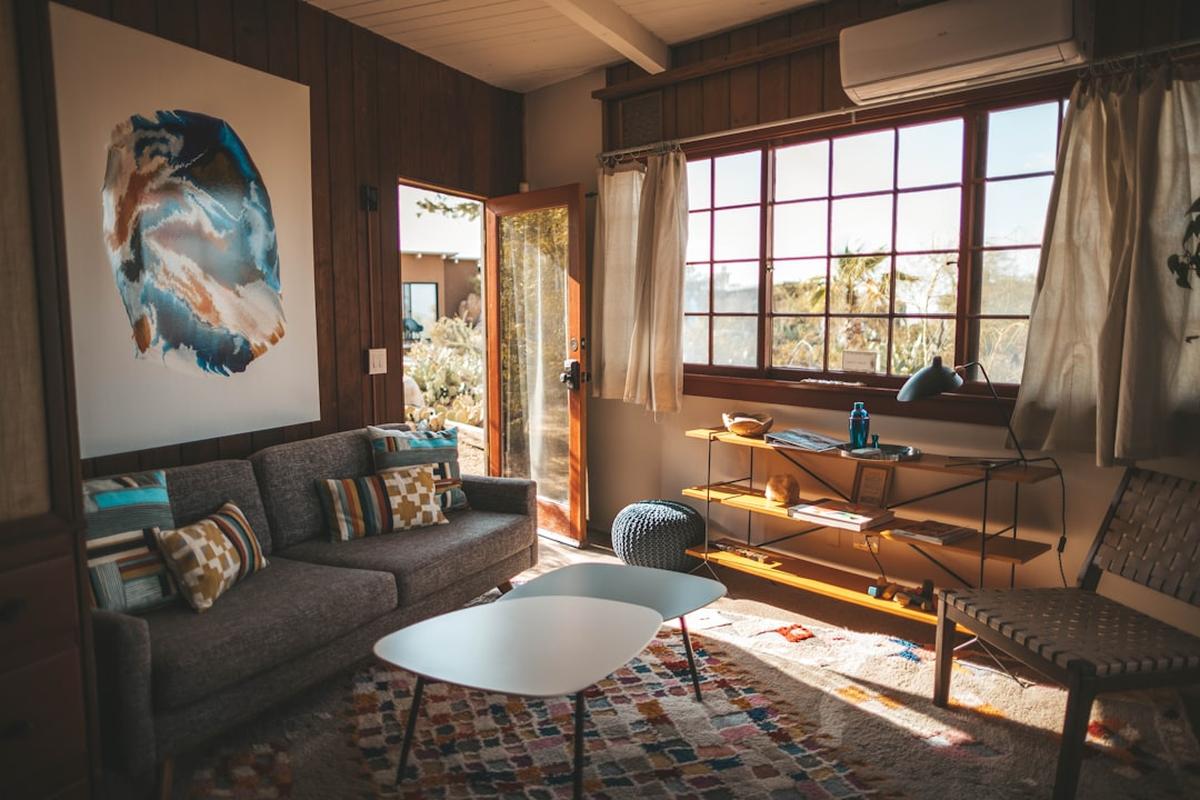My journey towards a green lifestyle began a few years ago when I realized the significant impact our daily choices have on the environment. Since then, I’ve been committed to making my home and lifestyle as eco-friendly as possible. I believe that by sharing my experiences and practical tips, I can inspire you to embrace a more sustainable lifestyle and make your living spaces more environmentally friendly.
Understanding Sustainability
What is Sustainability?
Sustainability is a principle that involves making decisions that not only benefit us now but also don’t compromise the ability of future generations to meet their needs. It’s about balance – a delicate dance between consumption and conservation.
Our Lifestyle Choices and the Environment
Our lifestyle choices, from the food we eat to the products we buy, have a profound impact on the environment. Overconsumption, waste, and reliance on non-renewable resources are just a few of the ways our lifestyles contribute to environmental degradation. However, by adopting sustainable practices, we can significantly reduce our environmental footprint.
My Transition to an Eco-Friendly Lifestyle
My Personal Journey
My transition to a green lifestyle wasn’t overnight. It started with small changes like recycling more and using less plastic. Over time, these small changes became habits, and I began to explore other ways to live more sustainably. It was a learning process, filled with trial and error, but the satisfaction of knowing I was making a positive impact on the environment made it all worthwhile.
Overcoming Challenges
Like any journey, there were challenges. It was difficult to break old habits and resist the convenience of non-sustainable practices. However, I found that educating myself about the environmental impact of my choices and seeking out sustainable alternatives helped me stay committed to my green lifestyle.
Recycling: A Simple Step Towards Sustainability
The Importance of Recycling
Recycling is one of the simplest and most effective ways to conserve natural resources. It reduces the need for raw materials, which in turn reduces deforestation and mining. Plus, recycling saves energy and reduces greenhouse gas emissions, which helps combat climate change.
Practical Tips for Effective Recycling
Start by familiarizing yourself with your local recycling guidelines. Not all materials are recyclable, and some require special handling. Make it a habit to rinse out containers before recycling them to avoid contamination. Consider setting up a recycling station at home to make the process easier.
My Recycling Habits
I’ve made recycling a part of my daily routine. I have separate bins for paper, plastic, and glass, and I make sure to recycle electronics and batteries properly. It’s a small step, but it’s one that has a big impact.
The Power of Saying No to Plastic Bags
The Environmental Harm of Plastic Bags
Plastic bags are a major environmental issue. They’re not biodegradable, which means they can persist in the environment for hundreds of years. They’re also a threat to wildlife, as animals can mistake them for food.
My Transition to Reusable Bags
Switching to reusable bags was one of the first major changes I made in my journey towards sustainability. I started by keeping a few reusable bags in my car and purse so I would always have one on hand. It took some time to remember to bring them, but now it’s second nature.
Tips for Saying No to the Bag
Next time you’re at the store, try saying no to the bag. If you only have a few items, consider carrying them out without a bag. If you’re doing a big shop, bring your reusable bags. And if you forget your bags, ask for a paper bag instead of plastic.
Conscious Consumption: Buying Only What You Need
The Environmental Impact of Overconsumption
Overconsumption is a major driver of environmental degradation. It leads to resource depletion, waste generation, and increased greenhouse gas emissions. By buying only what we need, we can reduce our environmental impact and contribute to a more sustainable economy.
Learning to Buy Only What I Will Use
I used to be a bit of a shopaholic, always buying the latest trends and gadgets. But as I learned more about the environmental impact of overconsumption, I started to change my habits. I began to buy less, choose quality over quantity, and prioritize needs over wants.
Tips for Conscious Consumption
Before making a purchase, ask yourself if you really need it. Consider the environmental impact of the product, including its production, use, and disposal. Choose products that are durable, reusable, and made from sustainable materials. And remember, sometimes the most sustainable option is not to buy anything at all.
The Benefits of Buying Second Hand
Environmental and Financial Benefits
Buying second hand is a great way to reduce your environmental impact and save money. It extends the life of products, reduces waste, and decreases the demand for new products. Plus, you can find unique items that you wouldn’t find in regular stores.
My Experience with Second-Hand Shopping
I’ve found some of my favorite items at second-hand stores, from vintage clothing to antique furniture. It’s like treasure hunting – you never know what you’ll find. Plus, I love knowing that I’m giving a second life to items that might otherwise end up in the landfill.
Tips for Finding Quality Second-Hand Items
Start by exploring your local thrift stores, consignment shops, and online marketplaces. Look for items that are in good condition and fit your style. Don’t be afraid to negotiate prices, especially for larger items. And remember, patience is key – it might take some time to find the perfect piece.
Avoiding Idle Equipment
The Environmental Cost of Idle Equipment
Idle equipment, from unused appliances to idle cars, can be a significant source of energy waste and greenhouse gas emissions. By using our equipment more efficiently and investing in energy-efficient models, we can reduce our environmental impact.
Investing in Necessary Equipment
I used to have a habit of buying gadgets and appliances that I didn’t really need. But as I became more conscious of my consumption, I started to question these purchases. Now, I only invest in equipment that I know I will use regularly and that is energy efficient.
Tips for Avoiding Idle Equipment
Before buying new equipment, consider if you really need it. Can you borrow or rent it instead? If you do need to buy, choose energy-efficient models and make sure to use them efficiently. And remember to unplug your equipment when it’s not in use to save energy.
Donating Used Goods: A Win-Win for the Environment and Community
The Benefits of Donating Used Goods
Donating used goods is a great way to reduce waste and support your community. It extends the life of items, reduces the demand for new products, and helps those in need.
My Experience with Donating Used Goods
I regularly donate items that I no longer need, from clothing to furniture. It’s a rewarding experience, knowing that my items are going to a good home and helping others. Plus, it’s a great way to declutter and make space for new items.
Tips for Effective Donation
Before donating, make sure your items are in good condition and still usable. Consider donating to local charities, shelters, and thrift stores. And remember, you can also donate non-material items like your time and skills.
Choosing Products with Less Packaging
The Environmental Impact of Excessive Packaging
Excessive packaging is a major source of waste and pollution. It uses up resources, contributes to deforestation, and often ends up in landfills or the ocean.
Transitioning to Products with Less Packaging
I’ve made a conscious effort to choose products with less packaging. I buy in bulk, choose products with recyclable or compostable packaging, and bring my own containers when shopping.
Tips for Choosing Minimal Packaging
Next time you’re shopping, consider the packaging of the product. Can you choose a product with less or no packaging? Can you bring your own container or bag? Every little bit helps.
Avoiding Disposable Products
The Harm of Disposable Products
Disposable products, from plastic cutlery to disposable diapers, are a major source of waste and pollution. They use up resources, contribute to landfill waste, and often contain harmful chemicals.
My Journey Towards Reusable Alternatives
I’ve been gradually replacing disposable products with reusable alternatives. I use cloth napkins instead of paper ones, reusable water bottles instead of plastic ones, and cloth bags instead of plastic bags. It’s been a process, but I’m proud of the progress I’ve made.
Tips for Avoiding Disposable Products
Start by identifying the disposable products you use most often and look for reusable alternatives. It might take some time to adjust, but the environmental benefits are worth it.
Final Remarks
Embracing a green lifestyle has been a rewarding journey for me. It’s not always easy, but the satisfaction of knowing I’m making a positive impact on the environment makes it all worthwhile. I hope my experiences and tips inspire you to make your own journey towards a more sustainable lifestyle.
Additional Resources
For further learning, I recommend books like “The Story of Stuff” by Annie Leonard and “Zero Waste Home” by Bea Johnson. Websites like TreeHugger and Greenpeace also offer great resources. And for sustainable products, I recommend brands like Patagonia, Eileen Fisher, and Preserve.
Frequently Asked Questions
How can I start living a more sustainable lifestyle?
Start with small changes like recycling more, using less plastic, and buying only what you need. Educate yourself about the environmental impact of your choices and seek out sustainable alternatives.
What are some easy ways to reduce waste at home?
Some easy ways to reduce waste at home include recycling, composting, using reusable products, buying in bulk, and choosing products with less packaging.
How can I make my shopping habits more sustainable?
Consider buying less, choosing quality over quantity, and prioritizing needs over wants. Choose products that are durable, reusable, and made from sustainable materials. Consider buying second hand and donating items you no longer need.
How can I reduce energy waste at home?
You can reduce energy waste at home by using your equipment more efficiently, investing in energy-efficient models, and unplugging your equipment when it’s not in use.
What are some sustainable brands you recommend?
I recommend brands like Patagonia, Eileen Fisher, and Preserve. They’re committed to sustainability and offer high-quality, durable products.
How can I learn more about sustainability?
Books like “The Story of Stuff” by Annie Leonard and “Zero Waste Home” by Bea Johnson are great resources. Websites like TreeHugger and Greenpeace also offer a wealth of information on sustainability.







